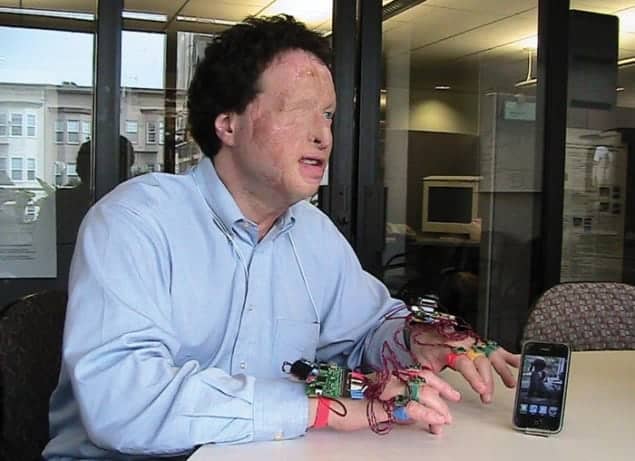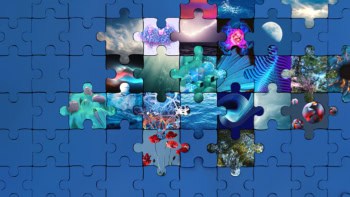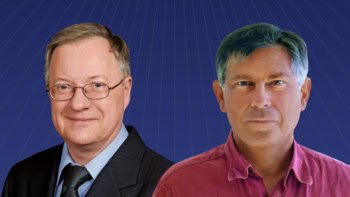Joshua Miele is a researcher at the Smith-Kettlewell Eye Research Institute in California who develops adaptive devices for people who are blind, like him. He speaks to Margaret Harris about his career

What sparked your interest in physics?
Like many scientists of my generation, I grew up reading a lot of science fiction. In addition, my stepfather – a very strong figure in my life – is a geophysicist, so I was always surrounded by earth-science types. I studied biology and chemistry in high school, but I always had deeper questions, and it seemed like if you really wanted to answer them, you had to study physics.
What was it like for you to study physics at university?
Being a blind physics student is a lot more work than being a sighted physics student. For example, I had to have someone read my textbooks out loud so that I could copy them into Braille; I would copy verbatim all the equations and even many of the tables so that I had reference materials for the classes I was taking. But I was also lucky. I went to the University of California, Berkeley, which was the birthplace of the disability rights movement, and I think in part because of that movement, I had almost no negative experiences with my professors. They were almost always willing to work with me to find creative ways of helping me to progress in my studies.
You earned your PhD in psychoacoustics. Can you explain what that is?
Psychoacoustics is the science of how hearing works. There’s a very long tradition of crossover between the physics and psychology communities in this area because it lies at the interface between acoustics and brain function. It’s a broad field, covering both “mushy” topics like how someone feels about a piece of music and “hard” ones such as the responses of specific neurons to frequency changes and other acoustical variations. My focus was on something called auditory motion perception, which basically examines how you know about sounds in the environment that are moving from one place to another.
How did you get into adaptive-devices research?
When I was an undergraduate I worked at a software firm called Berkeley Systems. Physics World readers might remember it as the company that made screensavers popular – it did the famous “flying toasters” screensaver for the Macintosh computer (Mac) in the late 1980s and early 1990s – but it actually got started as a screen-reader company. People there invented a way of making Macs (which were the first consumer-level devices to have a graphical user interface) accessible to blind people via text-to-speech software and a set of keyboard commands for navigating around the screen. There had been concerns that once computing got away from the command-line interface, blind people would be locked out of computers and the jobs associated with them, so it was a real breakthrough that Berkeley Systems was able to create this fairly inexpensive little piece of software that made Macs completely accessible. I was in awe of that kind of innovation. I started out doing technical support, then technical writing and ultimately I did a lot of the interface design work for the accessibility software that was released for Microsoft Windows later in the 1990s.
What technological aid that is currently out of reach would you most like to see become a reality?
The thing that we don’t have right now is a 2D tactile display. Sighted people have computer screens that they can look at that show very high-resolution images and video. But for a blind person to get access to the information in a 2D image is very difficult. If I want to look at a chart or a graph, then I either need to print it out using a Braille printer or I need to come up with some kind of clever “sonification” technique, using sound to represent the information. Having a 2D, computer-controlled display that I could just feel would be an incredible innovation. I can’t tell you how many times people have thought they’ve invented it, only to realize later that they didn’t really understand some critical design requirements. What we need is something that’s robust, inexpensive and portable, with the ability to change the image quite rapidly. It’s a very difficult problem. We jokingly call it the “Holy Braille”, because it’s something we all want and it has eluded all the brightest minds for quite some time.
How has your physics background helped you?
There is a lot of physics in many of the things I do. For example, to understand tactile perception, you need to know about friction and kinematics. But I think it’s had a more of an impact on the way I think about problems than it has on my daily work. One of the things I learned as a physics student is that when you’re looking at a problem, the whole thing may be quite daunting, but even if there are parts of it that you don’t understand, there will almost always be parts that you do understand, and you can use them as points of entry. It’s a problem-solving technique that I use in my entire approach to life.
- Learn more about the devices Miele and his group are developing at www.mielelab.org



